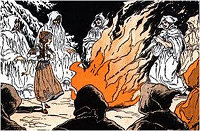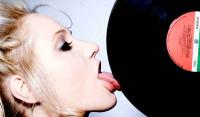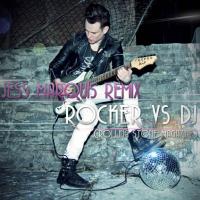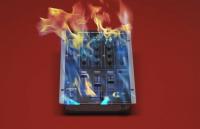Halloween History Recap – Why Not?
 Halloween, All Hallows Eve, Feast of the Dead, Festival of Samhain. There are many names for the holiday that comes every year just as the year moves from long days to long nights. Costumes, candy, parties, parades, contests, ghosts, witches, jack-o-lanterns have become long standing traditions and part of the excitement swept in with the brisk air. But, have you ever wondered how Halloween shifted from a kid’s holiday to an adult festival? I have, curious so and so that I am, so I did some research and here is what I found.
Halloween, All Hallows Eve, Feast of the Dead, Festival of Samhain. There are many names for the holiday that comes every year just as the year moves from long days to long nights. Costumes, candy, parties, parades, contests, ghosts, witches, jack-o-lanterns have become long standing traditions and part of the excitement swept in with the brisk air. But, have you ever wondered how Halloween shifted from a kid’s holiday to an adult festival? I have, curious so and so that I am, so I did some research and here is what I found.
Halloween is not an American original, nor is it a Christian holiday. The origins of Halloween date back to the ancient Celtics over 2000 years ago in what is now Ireland, the UK, and France, celebrating the final harvest on October 31st, which was the start of the new year.
The Celts split the year between light and dark and they believed that the veil between the living and the dead was the thinnest on this day, allowing the Druids to make predictions about the future. The Festival of Samhain (pronounced sow-in) was the night when the Celts remembered their beloved dead and prepared for the upcoming winter months. Bonfires were built and sacrifices of crops and animals were made to the Celtic deities to appease their mischief.
By 43 AD the Romans had conquered much of the Celts homeland and combined the Celts holiday with two Roman holidays. By May 13, 609 AD Pope Boniface IV declared a day to commemorate the saints and expanded it to include souls and martyrs. The pagan holiday of Lamuria, which was originally on May 13, was then assumed into the Church and moved to October 31st to deflate the Festival of Samhain and anchored by All Saints Day, November 1st, and All Souls Day, November 2nd, to make it a Christian celebration.
Trick or Treating was indirectly started in the Middle Ages in Britain as people made “soul cakes” to give as alms to the poor or children who came door to door, in exchange for prayers and songs for souls to be released from purgatory on Hallomas (All Hollows Eve, Halloween). Soul cakes were small round cakes, usually filled with allspice, nutmeg, cinnamon, ginger or other sweet spices, raisins or currants, and before baking were topped with the mark of a cross to signify that these were alms.
Ghoulish Icons
Some of today’s Halloween icons are rooted in violence, such as the witch. The witch panic of the 16th century cemented the image we have today of witches. “Witches” of the time were mostly women and associated with the devil. They were likely local healers and their everyday tools became things of myth: Broom, cauldron, pointed hats and cats.
The Jack-o-Lantern is based on an Irish legend of a man nicknamed Stingy Jack. The story goes that Stingy Jack tricked the Devil on several occasions until the Devil agreed not to claim his soul. After he died, Jack was not allowed into heaven and the Devil forever cast him into the night with just a coal to light his way. Jack carved out a turnip to carry the coal around in. The Irish began to refer to this ghostly figure as “Jack of the Lantern,” and then, simply “Jack O’Lantern.” The Irish brought this legend with them to the Americas, home of the pumpkin. The tradition of carving a scary face into a pumpkin, putting a light into it and displaying it in a window was to ward off ghosts and Stingy Jack himself.
Costumes were originally designed as a means of disguising oneself as mischief and destruction became a large part of the youth culture in Europe. As they moved to America, they were originally made of household items, including the ghost. The white sheet can be directly associated with the shroud of death. It was only after the 1933 “Black Halloween”, where widespread violence was out of control, that costumes were designed and marketed for the first time. The Dennison Book Company was the first to company to make money from Halloween. They put out a series of books called the Bogie Books to help community leaders tame Halloween. Parties and activities were developed for children and adolescents in order to keep them off of the street and from causing damage in big cities.
Although the “Trick or treat” custom goes back centuries, the phrase is less than 80 years old. The community bought off pranksters with homemade treats. 1939 was the first time the phrase “Trick or Treat” showed up in print and it was no longer about homemade treats. Candy finally tamed the rowdy Halloween.
Halloween then went Hollywood, as a true pop culture phenomenon. In 1966 Halloween found a home on TV. The comic strip “Charlie Brown” turned Halloween main stream. This was the unofficial seal of approval for this holiday.
The first themed movie was John Carpenter’s Halloween (1978). To this day, Michael Meyers remains one of the most popular Halloween icons. This redefined the limits of what the Halloween mask could be and changed the face of Halloween. It evolved masks, makeup and costumes into an art form, and not just for kids. Adults became part of the party.
Masks allow us to do things we normally wouldn’t do. Hollywood influenced what we wear, inspired from pop culture, religion, politics, myth and history, limited only by imagination. Dressing up lets us be, if only for one night, anything other than ourselves.
So as we gather at our parties this year, keep in mind that we are repeating a historical event that has its roots in an ancient tradition of appeasing ghostly pranksters with sacrifices, or treats if you will. And, while adults make it one of the most colorful, extravagant events of the year, Halloween still remains the domain of kids.
Sources: history.com, wikipedia.com, google.com



